On his 100th day as PM, 8 charts on India’s competitiveness Modi should look at
On Narendra Modi’s 100th day in office as India’s prime minister, here is a chart for him to take a good look at.


On Narendra Modi’s 100th day in office as India’s prime minister, here is a chart for him to take a good look at.
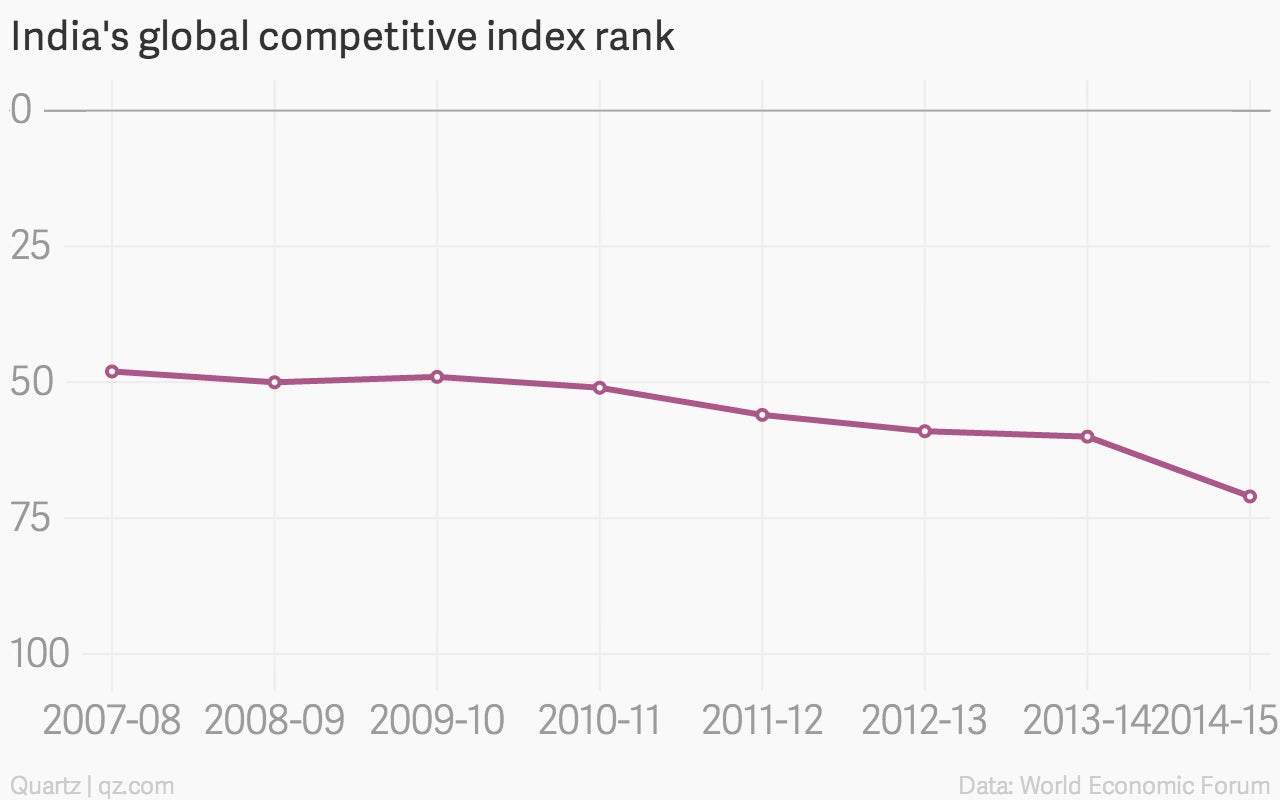
Yes, India’s global competitiveness is slipping and the rate of decline is rising.
India ranks 71 in the World Economic Forum’s World Competitive Index rankings, down 11 positions from the previous year to find itself at the lowest ranking for any BRICS economy. India’s ranking has been sliding since 2009 and this year’s fall has been the steepest.
Switzerland continues its run at the top of the rankings for the sixth year in a row, while Singapore came second and the United States third.
Among Asian economies, Singapore, Japan and Hong Kong makes it to the top ten, while Malaysia and Taiwan are ranked among the top 20. China is 40 ranks ahead of India.
Here is an excerpt from the report that gives a sense of how India is doing (all ranks are out of 144):
“For example, it takes 12 procedures (130th rank) and almost a month to register a business (106th). Businesses also face serious obstacles in the form of a high total tax rate (130th) and an inefficient and rigid labor market (112th). India’s lowest pillar rank is in technological readiness (121st). Despite almost ubiquitous mobile telephony, India is one of the world’s least digitally connected countries: only 15 percent of Indians access the Internet on a regular basis and broadband Internet, if available at all, remains the privilege of a very few.”
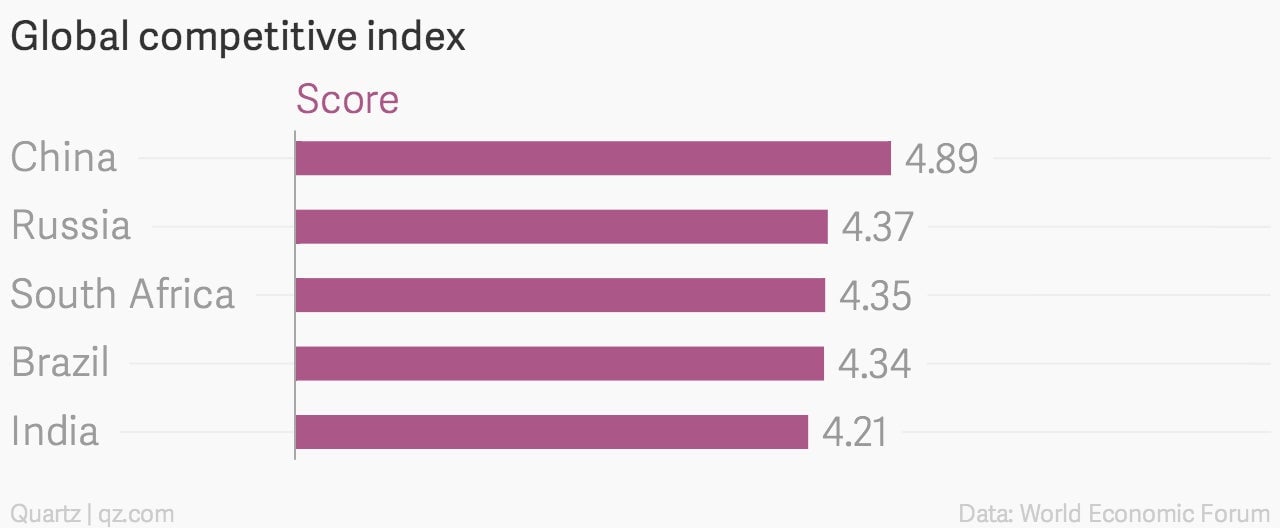
On a scale of seven, India scores poorly in just about every indicator that defines WEF’s global competitive index, making it the lowest ranked among all the BRICS countries—a grouping of Brazil, Russia, India China and South Africa.
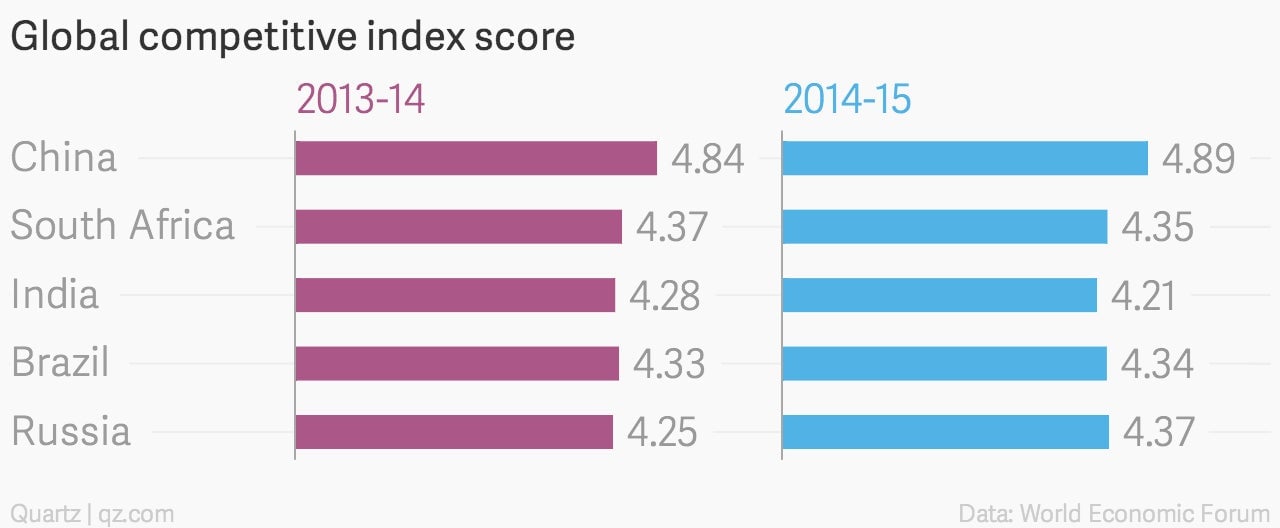
Among the BRICS countries, India and South Africa are the only countries who have scored lower on the global competitive index score over last year.
Finance minister Arun Jaitley has said that India’s economy has already started to show signs of revival. The GDP grew at 5.7% in the first quarter, the fastest in 2.5 years.
Here is how India does on the constituent factors, or “pillars” that make up the WEF report.
Poor macroeconomic situation
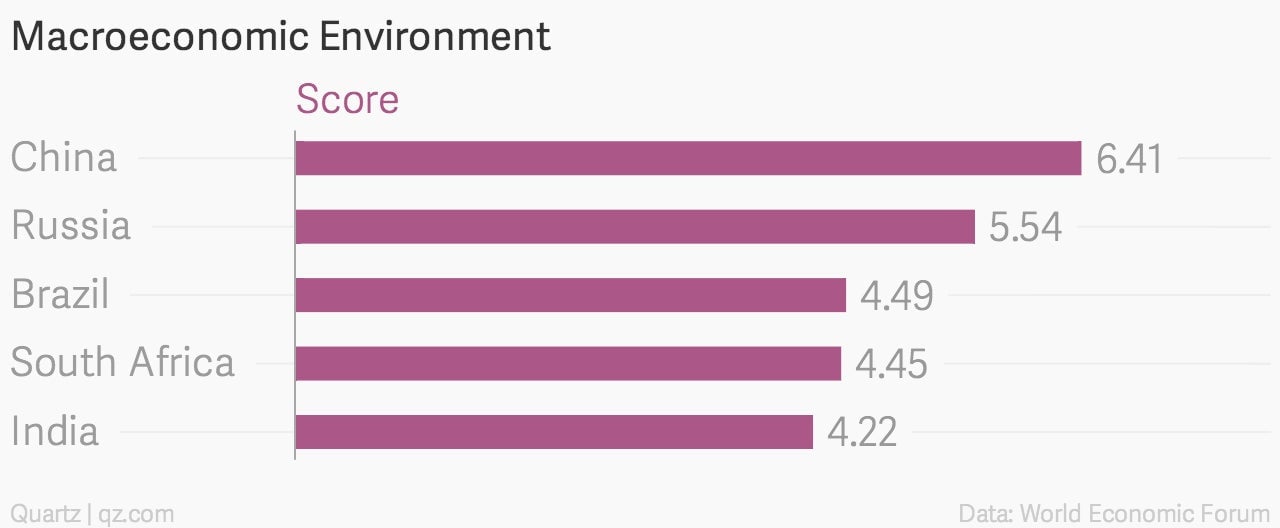
India grew by 4.4% in 2013—slowest in a decade—crimped by high fiscal deficit and inflation. In 1991, India’s GDP per capita was higher than China but today China is four times richer.
In his maiden budget, Jaitley said his aim is to keep India’s fiscal deficit under 4.1% of GDP—an ambitious target. India finishes last among the BRICS countries. Even Brazil—a country that recently went into recession—scores better on macroeconomic stability.
Rickety infrastructure
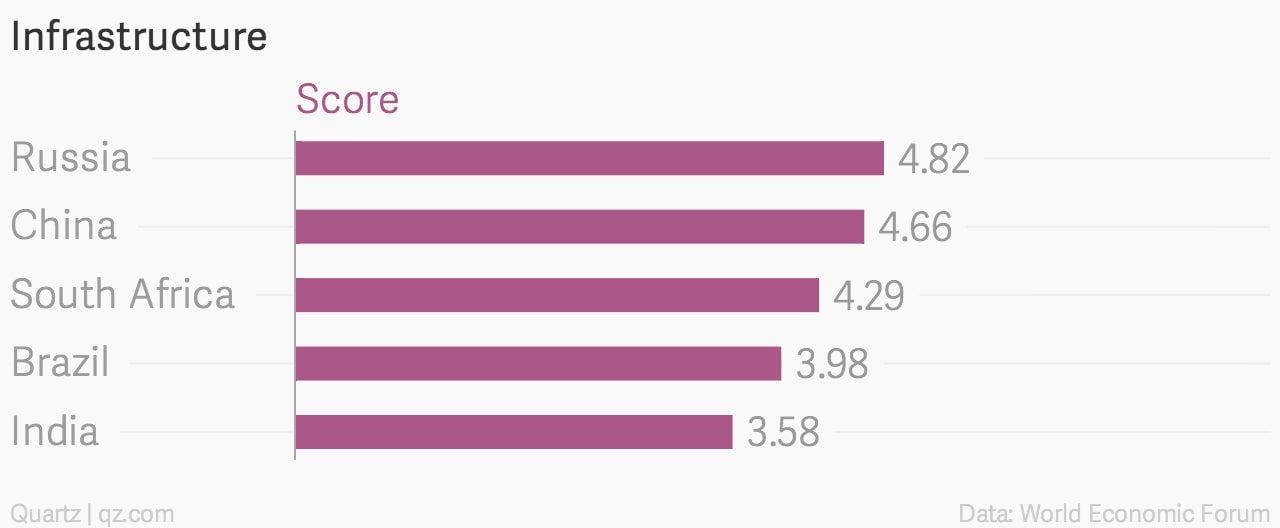
Around one in three Indians have no regular access to electricity which translates to 400 million people. Roads are mostly poor, railways need investments to revamp itself. So do the ports and airports across the country.
And Modi knows India needs an infrastructure boost. He has repeatedly stressed on the need for better infrastructure in India during his election campaign. Modi’s infrastructure track record in Gujarat has raised expectations on this front.
Technology preparedness
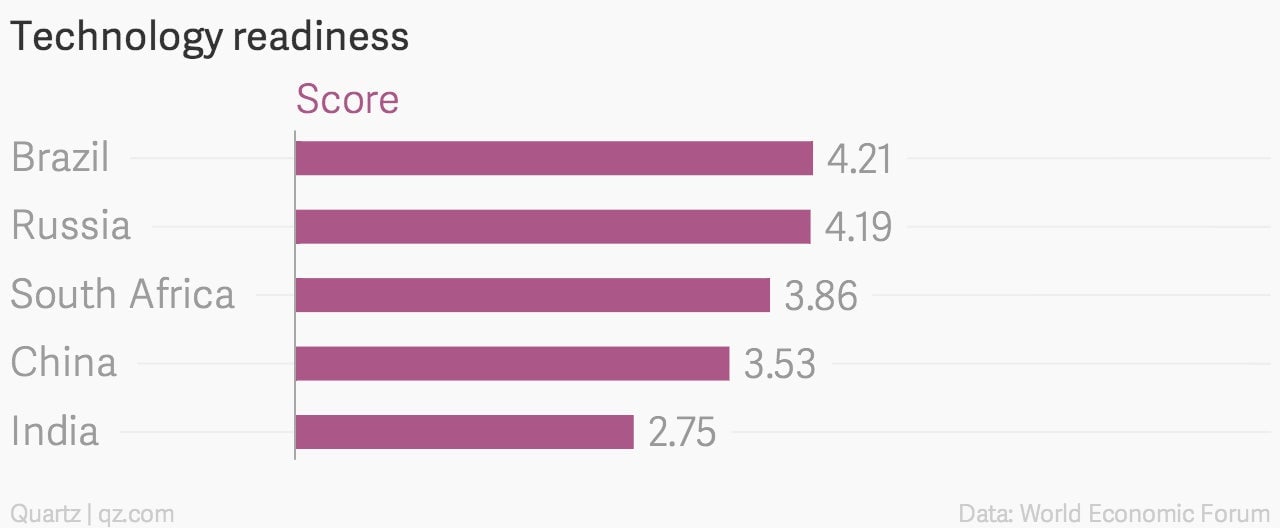
It’s surprising but India—a country known for its technological prowess—ranks 121—its lowest rank among all the indicators. This essentially means there is a big digital divide which India needs to bridge and industries in India aren’t able to harness the technology to improve their output.
But Modi has big plans of a technology overhaul in the country. He wants to build a ‘digital India‘ which would deliver basic services such as healthcare, education and banking and smart cities which will use big data and technology to make more efficient cities.
India and Japan recently signed a pact to develop India’s ancient city of Varanasi into a smart city.
Silver lining
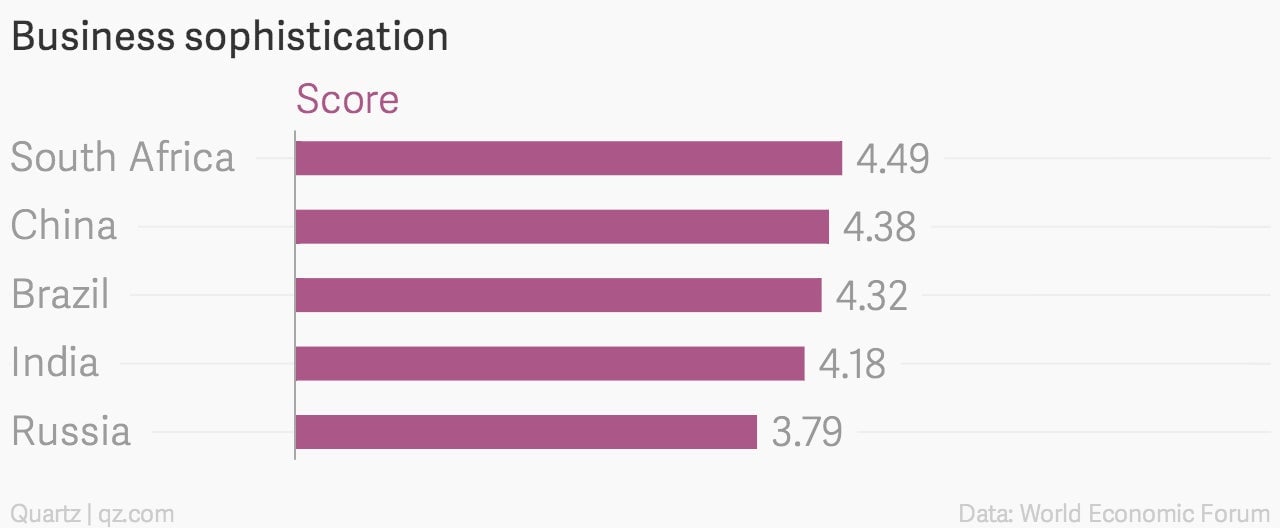
All the doom and gloom aside, India has shown some spunk in business sophistication and innovation. It ranks fourth among BRICS countries in terms of business sophistication and third in innovation.

Business sophistication comprises the quality of the country’s business networks and the quality of the strategy and operations of individual companies in the country while innovation means investment in research and development.
Why should India care about competitiveness? Jobs, most importantly.
“Improving competitiveness will help rebalance the economy and move the country up the value chain, ensuring more solid and stable growth; this in turn could result in more employment opportunities for the country’s rapidly growing population,” says the WEF report.